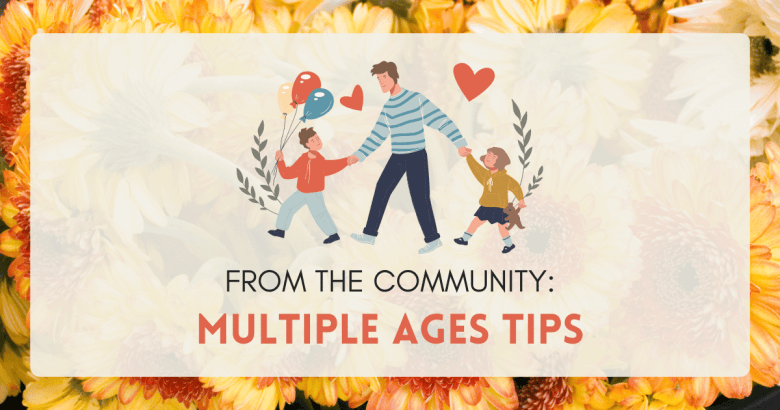Homeschooling multiple ages can feel like embarking on an epic quest where each child has unique needs, interests, and learning styles. With the wisdom shared by our homeschool community, we'll offer you valuable insights into time management, curriculum choices, individualized instruction methods, and fostering sibling collaboration.
From organizing group activities that cater to various skill levels to balancing personalized attention with independent study time – we've got you covered! So grab your compass and join us on this enlightening journey as we unlock the secrets of successful multi-age homeschooling from those who have ventured into this educational frontier before you.
Independence
"As a mom of 4 who has homeschooled for almost 20 years, my best tip for homeschooling multiple ages is to gradually teach independence. Start with one subject, and teach your older children how to do everything on their own, only coming to you when they need help.
Independent learning may mean a video course if needed. But they will gradually learn how to learn on their own.
At first, it hurt my heart to give up some control, but it honestly was the best thing. I had more time to devote to my younger learners who needed me. Plus, my older kids learned valuable skills that helped them out so much in college!" ~ Jacquelyn Hargis Barrett
Multiple Ages
"I let my youngest kids stay up late and sleep in. Since the little ones are sleeping late, I get the high school kids up about an hour before the little ones awaken and get their lessons mostly finished before the little ones are around." ~ Diane Robertson
Age Gaps
"I'm currently teaching two (eventually three) kids with a three-year age gap. We start together with a library book they'll both appreciate. Then one kid gets hands-on work while the other works on school videos (repetition work, exercise video, etc). Then they trade places." ~ Rebecca Miller
Matching Subjects
"Even if you are not teaching all of the kids together, it is very helpful if they can each focus on a similar topic for content subjects.
So for history, maybe everyone is doing ancient history or everyone is doing American history. For science, maybe everyone is doing biology that year.
As much as possible it is easiest on Mom's brain to keep all students on similar topics and in similar time frames even if they are doing work at their own grade level.
This makes it easier to make field trips applicable to everyone as well as read alouds. One of our hardest years was when I had one child learning about astronomy, another doing ecology, and a third learning about the human body. Now I have six students and I can't imagine if everyone was learning their own things." ~ Elisabeth Reitenbach
Unit Studies
"Unit studies can be adapted for multiple ages! Science and social studies make great subjects for unit studies and can incorporate math and language arts." ~ Jenny Dangerfield Croft
Older Kids Teaching The Younger Kids
"Include older students teaching the younger - even if it's mini-lessons. *You learn the most when you teach others and it builds relationships." ~ Laurie Hull
Combine Subjects
"I combine subjects like science and history. I will give independent work to one group of children while I work on a lesson with the other group. I set learning in 30-minute blocks. After two subjects, I do a break for 15-minutes." ~ Laura Ann McFate
Homeschooling Multiples
"I have kids ages 16, 14, 10, and 7. I’ve homeschooled them all from the beginning. My top two tips are:
1) When possible, teach one lesson and assign age appropriate work. No reason to teach 4 different lessons. This works well for history and science.
2) Gradually move children toward independence. By the time they are teenagers, they should be able to work on their own (although we will still do some group lessons at times because I think it’s good for the kids to learn together)." ~ Leanna Zimmerman
Morning Routines
"The biggest help for me is filling up the preschoolers need bucket first. We do breakfast, and directly after breakfast go for a walk. After our walk I spend 20 minutes with the toddlers. Then they are more willing to play independently while I start working with the 1st, 3rd and 6th grader. Also snacks snacks and more snacks." ~ Martha Harms
Want more tips or have a few of your own to add? Click here to read the thread and join The Homeschool Quest group! Together, we can navigate the unique challenges of homeschooling mutiple ages. Join us on Facebook and continue your journey towards successful homeschooling!
Read More!
- Log in to post comments

